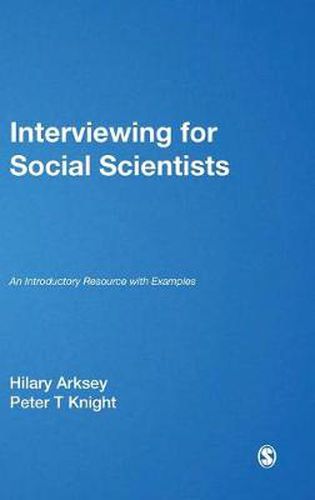Readings Newsletter
Become a Readings Member to make your shopping experience even easier.
Sign in or sign up for free!
You’re not far away from qualifying for FREE standard shipping within Australia
You’ve qualified for FREE standard shipping within Australia
The cart is loading…






‘This is an excellent book. It will be required reading on my methods courses’ - Nigel Fielding, University of Surrey This book is comprehensive, easy to read, fascinating and a must for every college library where students study research methods for short reports or longer theses’ - Educational Review Students at postgraduate, and increasingly at undergraduate, level are required to undertake research projects and interviewing is the most frequently used research method. This book provides a comprehensive and authoritative introduction to interviewing. It covers all the issues that arise in interview work: theories of interviewing; design; application; and interpretation. Richly illustrated with relevant examples, each chapter includes handy statements of ‘advantages’ and ‘disadvantages’ of the approaches discussed.
$9.00 standard shipping within Australia
FREE standard shipping within Australia for orders over $100.00
Express & International shipping calculated at checkout
‘This is an excellent book. It will be required reading on my methods courses’ - Nigel Fielding, University of Surrey This book is comprehensive, easy to read, fascinating and a must for every college library where students study research methods for short reports or longer theses’ - Educational Review Students at postgraduate, and increasingly at undergraduate, level are required to undertake research projects and interviewing is the most frequently used research method. This book provides a comprehensive and authoritative introduction to interviewing. It covers all the issues that arise in interview work: theories of interviewing; design; application; and interpretation. Richly illustrated with relevant examples, each chapter includes handy statements of ‘advantages’ and ‘disadvantages’ of the approaches discussed.